How to Define Efflorescence?
Important Point
Effloresces, often referred to as the efflorescence meaning, is a crystalline set down of salts that can form when water is present in or on concrete, stone, brick, stucco, or other building surfaces.
It has a white or grayish shade and consists of salt deposits remain on the surface when water evaporates. In addition to it, efflorescence can become visible as a powdery substance on floors and walls and requires particular types of care to treat.
It is caused due to water-soluble salts are there in the concrete material, which comes on to the surface during evaporation of water from the concrete.
How Efflorescence Take Place in Concrete?
The generation of efflorescence in concrete, or the efflorescence definition, is factored by many external factors which are given underneath. This phenomenon is often studied in efflorescence in chemistry.”
- If there is a problem in curing concrete, the hydration process remains incomplete. By which the un-hydrated products come out near the surface of the concrete.
- Existent of salts in one of the materials of concrete. Generally, salts are mostly found in the fine aggregate or sand is taken out from the river beds.
- The slow rate of evaporation of water proving more time to salts to come out on the surface (the main reason why efflorescence cases appeared to be more during the winter months, on another hand during summer, high temperatures may cause evaporation fast. Hence it has fewer chances to appeared on the surface).
- The water used in the concrete mix is beyond the limit; it causes the concrete porous. Hence need to release extra water and salts to erupt on the surface and for efflorescence.
- During wet weather conditions mainly in the rainy season, the excess water acts as a path for the salts to carry on the surface of concrete and form a white crystalline powder.
- The variableness of concrete (curing or compaction) can result in localized problems where water can saturate more quickly through the concrete.
Also, read: What Is Rebar | Why use Reinforcement in Concrete | Types of Steel Reinforcement Bars
Various Type of Salts Presence in Efflorescence:
- Sodium Carbonate
Frequently seen easily in a mortar.
- Calcium Sulphate
Brick is chiefly source in a common efflorescence.
- Sodium Sulphate
Often cement-brick reactions cause this problem.
- Vanadyl Sulphate
Usually and easily found in brick.
- Potassium Sulphate
Visible in many cement-brick reactions.
- Calcium Carbonate
It may be discovered in mortar or concrete backing.
- Potassium Carbonate
Like sodium carbonate, typically found in mortar.
- Manganese Oxide
Often visible in brick.
Also, read: What Is Rebar | Why use Reinforcement in Concrete | Types of Steel Reinforcement Bars
Useful Article for You
- How to Find the Contour Interval
- How to Get a House for Free
- How to Identify Zero Force Members
- How to Measure Pipe Size.
- Grade Beam Definition
- How to Calculate Loads on Beams
- How to Build a Pier and Beam Foundation
- How to Use Hydraulic Cement
- How to Get Blood Out of Carpet Shaving Cream
- How to Get Sand in Raft
- How to Calculate Tributary Area
- How to Build a Lean-To Roof on Side of House
- How to Calculate Construction Cost Per Square Feet
- How to Tamp Dirt Without a Tamper
- How to Compact Sand Without a Compactor
- How to Get Dry Brick in Raft
- How to Attach Wood Fence to Metal Post
- How to Fix Spalling Concrete Foundation
- How to Get Dirt in Raft
- How to Measure Rebar Diameter
- How to Set a Benchmark in Surveying
How to Avoid Efflorescence in Concrete?
When considering efflorescence in cement, the following preventive methods can be used to prevent efflorescence in concrete, showcasing the various brake types used in vehicles.
- Installing a vapor obstacle to prevent the movement of moisture from the subgrade to the surface of a slab.
- The involvement of Class-F fly ash or metakaolin can be fixed up considerable amounts of calcium hydroxide in the concrete.
- The application of sealers and coatings can avoid surface water from penetrating to slabs.
- Preventing the toughened concrete from exposure to moisture by maintaining surface sealers and site drainage, and from growing groundwater by placing a plastic membrane under slabs.
- Waterproofing agents to be used to lessen permeability of concrete.
- Making the concrete denser will decrease the permeability of concrete up to an immense extent.
- Keep away the concrete from premature drying.
Use of specific content, aggregate, cement, and sand, which contains very less amount of salts in it.
Also, read: What Is Cover in Concrete | Clear Cover in Beams, Slab, Column, Footing
How to Exclude Efflorescence in Concrete?
- Before taking steps to the removal of efflorescence in concrete, as an initial step, the resource for the reasons for the efflorescence must be found out and tried to alleviate it.
- Furthermore, the removal of efflorescence can be done by mostly three adaptable methods,
1. Water Jet or Pressurized Water
- Firstly, Efflorescence in the concrete can be easily removed by using the high-pressure water jet. Applying high-pressure water may dissolve efflorescence quickly.
- However, care must need to be taken that the water after removing it is dried out. If it remains wet, the same water can create efflorescence on the surface.
2. By Using Brush (Hard Teeth)
- In rare cases, efflorescence is easily removable; it can be easily removed by using a broom or brush.
- But when the result is not satisfactory by dry brushing, scrub surfaces with clean water then lightly wash the cover.
3. By Acid Solution (Chemical Uses)
- Firstly, strict warning not to use Concentrated acid directly on concrete, the diluted proportion of 1:20 is used. The surface on which the acid will apply must be moist but without any water(on the cover).
- Keep the applied solution on the affected area for 10 to 15 minutes. The surface should then be thoroughly washed and scrubbed with lots of clean water.
- Do it again at least twice or until all traces of the acid solution have been removed from the surface.
- Acid washing may cause shade variations, and surface texture may get changed. When acid washing is preferable on color finishes, prefer a diluted acid solution (2%,1 part acid to 50 parts water).
- For the initial experiment, apply it to small areas to scrutinized its trial consequences.
- Proper safety criteria must be followed while working with acids in this procedure. Ensure that the working area has sufficient ventilation and avoid direct touch between the acid and steel.
Also, read: What Is Guniting, Set Guniting Systems , Advantage, Disadvantage
Adoptable Acids in This Work:
- Phosphoric acid.
- Phosphoric acid.
- Hydrochloric acid.
How to Prevent It:
Easy steps to resist its effects by providing silicone and acrylic coatings may help you to remove efflorescence. This coating will work as an absorber of water throughout a masonry surface and avoid efflorescence from returning. Moreover, the mixture of warm water and white wine vinegar has been exposed to eliminate efflorescence.
- It is using high-quality concrete that contains minimal water. It is known as “low slump” concrete.
- First, make sure the gravel and sand used in concrete have been washed further. More water used in this mixture is pure and salt-free.
- Use low-alkali mortar for brickwork; hence, alkali salts don’t pour into the masonry. Make sure that the chemical used in the manufacturing of fired bricks.
- Consider a sealer or paint, which will give you limited efflorescence. Since some sealers can trap the deposits and make them harder to eradicate, all things are done under expert supervision to get exact positive consequences.
Efflorescence in Concrete
Efflorescence in concrete is a whitish coloured powdered deposition of salts on the concrete surface that is formed due to evaporation of water from the concrete. It is caused when water soluble salts are present in the concrete material, which comes on to the surface while evaporation of water from the concrete.
Cinder Block Efflorescence
If you see efflorescence it means that water is getting trapped inside your concrete wall. If water is being trapped inside the foundation then spalling, scaling or cracking can happen in the future.
Yellow Efflorescence on Basement Walls
A The yellowish stains leaching through the coats of Drylok and primer on your walls are an indication that water in either liquid or vapor form still is entering your basement. Irrigation water that goes unused by plants or grass may be making its way into the basement.
Concrete Efflorescence Repair
When discussing what does efflorescence mean, it’s important to note that while sandblasting is a traditional option for removing efflorescence, that process can etch damage and weaken concrete masonry surface. Specially-formulated, water-based chemical treatments like QUIKRETE Efflorescence and Rust Remover offer an easy, safe and effective alternative to sandblasting.
Yellow Efflorescence on Basement Walls
A The yellowish stains leaching through the coats of Drylok and primer on your walls are an indication that water in either liquid or vapor form still is entering your basement. Irrigation water that goes unused by plants or grass may be making its way into the basement.
What Does Efflorescence Mean?
In chemistry, efflorescence is the migration of a salt to the surface of a porous material, where it forms a coating. The essential process involves the dissolving of an internally held salt in water, or occasionally in another solvent.
Efflorescence Meaning in Civil Engineering
Efflorescence is just a deposit of salts, usually whitish in colour, formed on the surface of concrete. It is derived from compounds dissolved within the concrete, transported to the surface and deposited upon evaporation. When precipitation occurs directly on the surface, it is termed efflorescence.
What Is Efflorescence in Concrete?
Efflorescence is a crystalline deposit of salts that can form when water is present in or on brick, concrete, stone, stucco or other building surfaces. It has a white or greyish tint and consists of salt deposits that remain on the surface after water evaporates.
What Is a Efflorescence?
Efflorescence is the property of some salts to lose wholly, or partly their water of crystallisation when their crystals are exposed to dry air even for a short time. Such substances are called efflorescent substances. Examples: Washing soda: When washing soda is exposed to dry air, it becomes a monohydrate.
Define Efflorescence in Bricks
Efflorescence’ is the term most commonly used to describe the deposit of crusty white mineral salts that appear on a masonry surface (concrete, render, brick or mortar) that have leached out from within the substrate when moisture migrates through it.
Efflorescence Meaning in Bricks
Efflorescence in the context of bricks refers to the white, powdery substance that can sometimes appear on the surface of bricks or other masonry materials. It’s caused by the migration of soluble salts to the surface of the material through capillary action. When water containing these salts evaporates, it leaves behind the salts on the surface, creating the white, crystalline deposits.
What Is Efflorescent?
“Efflorescent” is an adjective used to describe something that exhibits efflorescence. In the context of masonry and construction materials, if something is described as efflorescent, it means that it has the tendency to develop efflorescence. This could refer to bricks, concrete, stone, or any other porous material that is susceptible to the formation of white, powdery deposits on its surface due to the migration of soluble salts and subsequent evaporation of water.
Efflorescence Meaning in Cement
Efflorescence refers to a whitish, crystaline deposit on the surfaces of masonry, stucco or concrete. Efflorescence is the result of the migration of moisture from within either new or old masonry. When moisture migrates through the wall or floor, it dissolves mineral salts contained in the cement.
What Causes Efflorescence?
Causes of Efflorescence
Simply stated, efflorescence occurs when water containing dissolved salts is brought to the surface of masonry, the water evaporates and the salts are left on the surface.
Define Efflorescence with Examples
(1) (botany) The state of efflorescing; time of flowering or blossoming; anthesis. (2) (medicine) A condition where there is skin reddening, a rush or an eruption on the skin, e.g. measles, smallpox, scarlatina, etc.
Like this post? Share it with your friends!
Suggested Read –
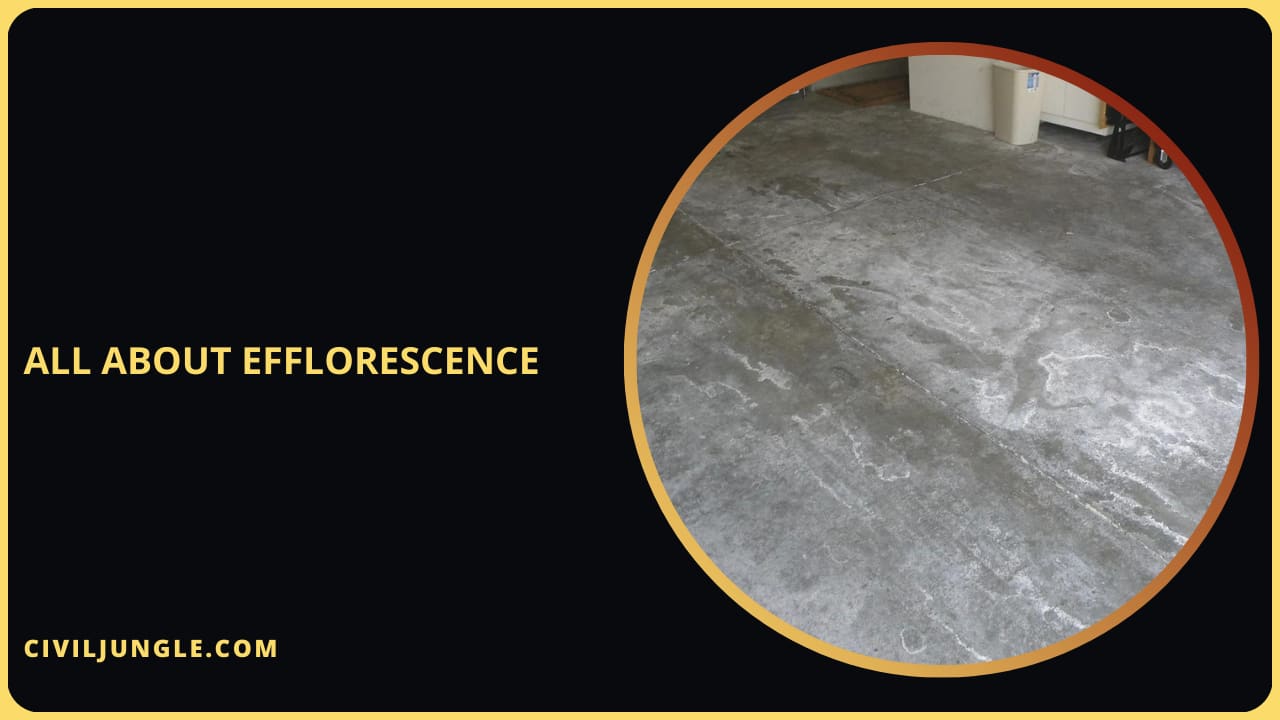
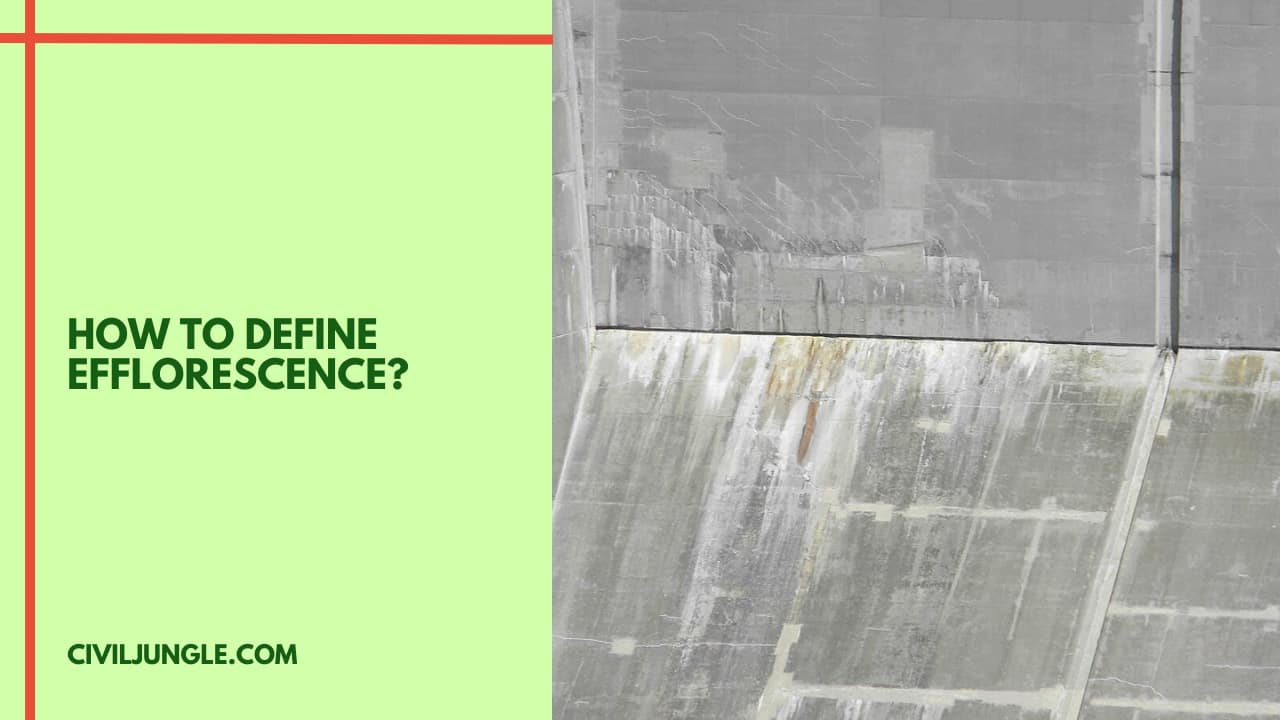
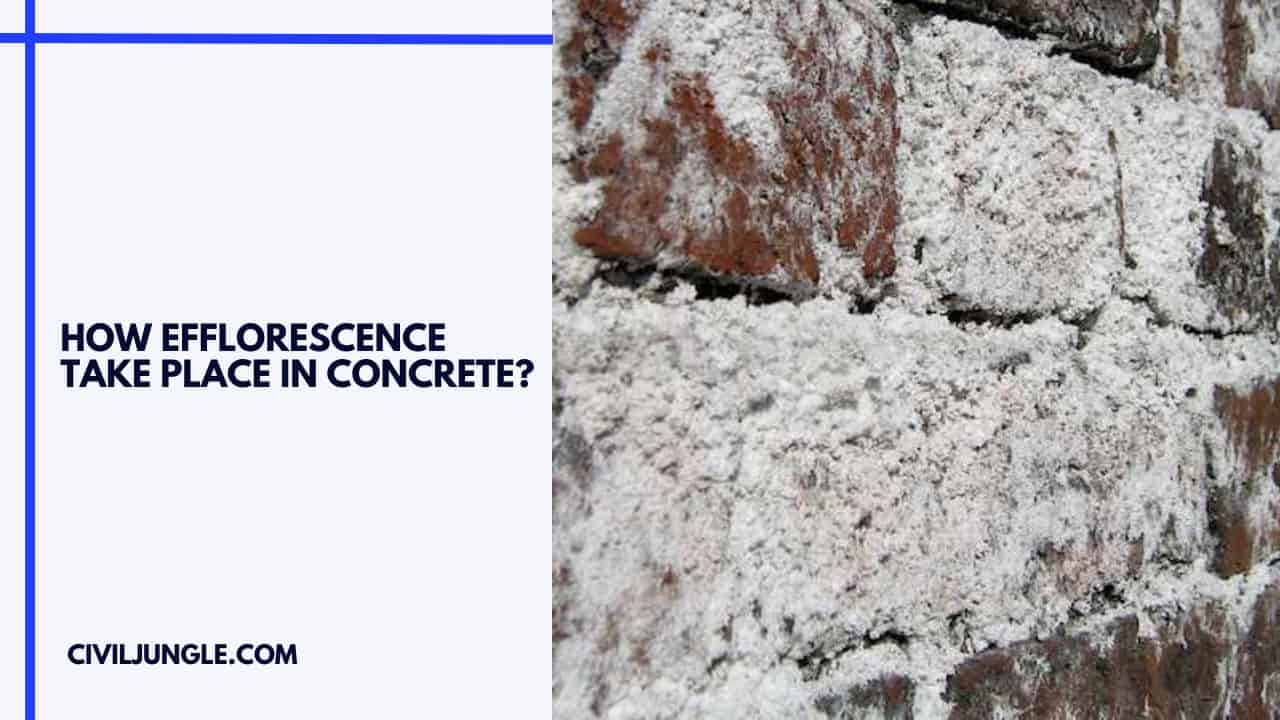
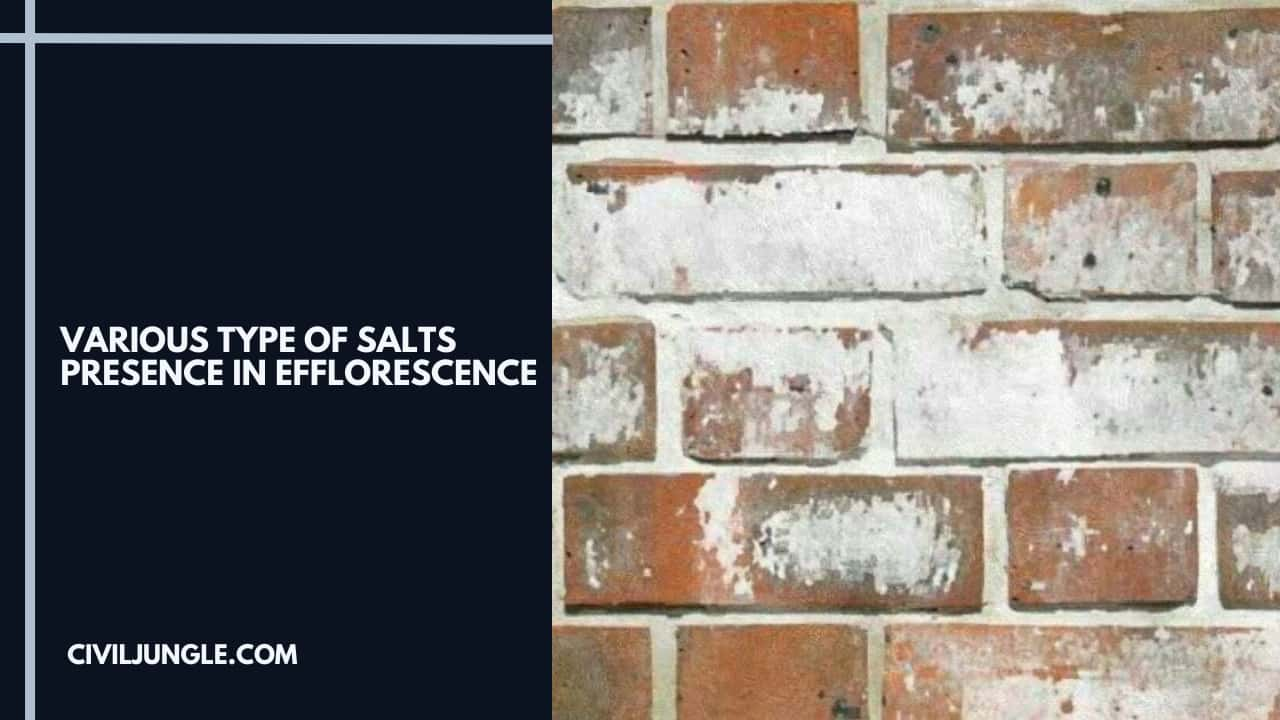
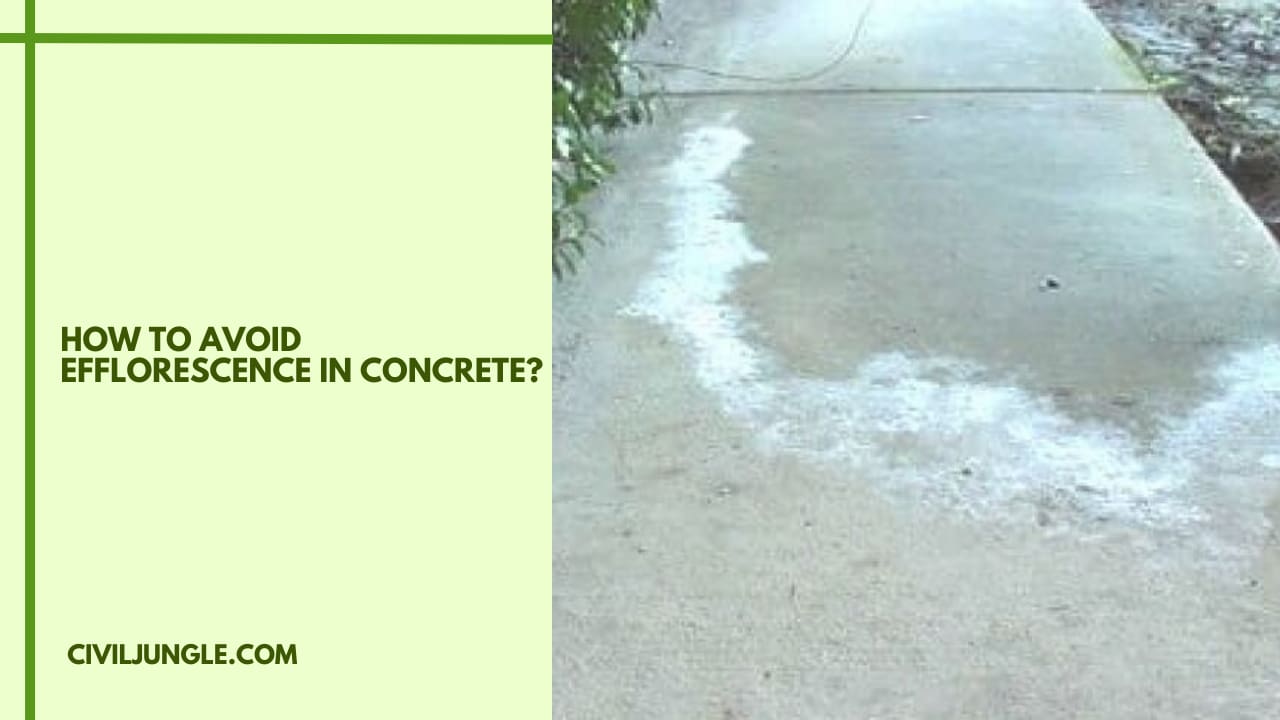


Wow, this article is pleasant, my younger sister is analyzing these kinds of things, so I am going to tell her.